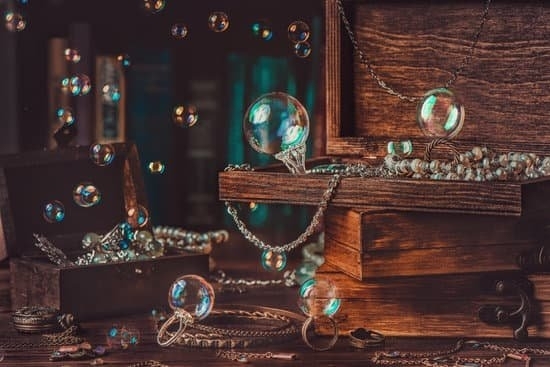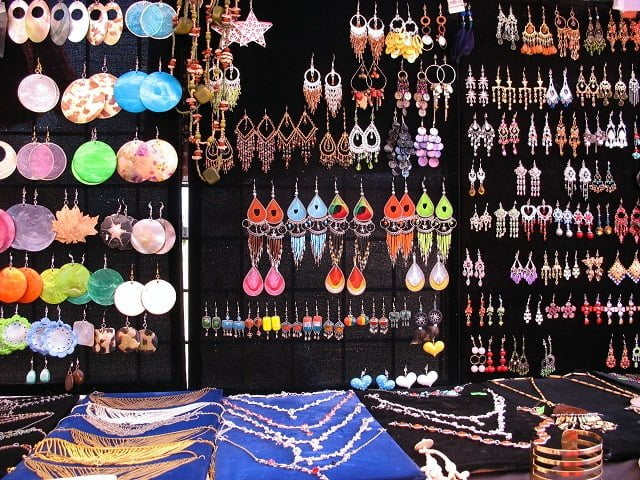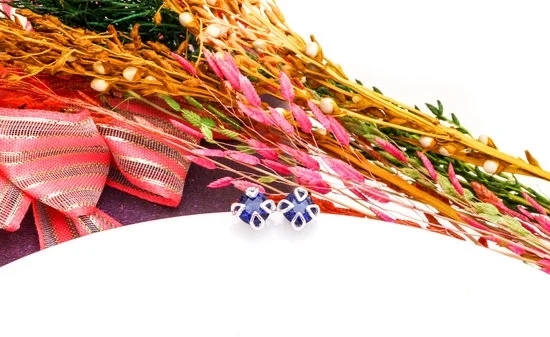The practice of wearing elaborate nose jewelry originates from ancient times in India, tracing back to the period between 500 BC and 300 AD. During this time, adorned noses provided a tremendous amount of beauty and significance to Indian culture.
In addition to being seen as traditional symbols of beauty in many parts of India, nose jewelry is also associated with religious and cultural motifs. Nose piercing is most commonly related to the Hindu goddess Parvati who symbolizes strength and power, although it has been documented in texts and scriptures dating back much earlier than Hinduism itself.
Nose jewelry was historically associated with an individual’s level of income or caste system, rather than for simple decoration purposes. Wealthy individuals were able to acquire precious metals such as gold or silver that were crafted into intricate designs beyond what others could afford.
Jewelry worn on the nose typically served both a practical and decorative purpose: not only did it enhance the wearer’s appearance but could be used to ward off evil spirits or bring good fortune. Women especially enjoyed accessorizing their faces with various forms of traditional jewelry such as naths (a small circular nose ring attached by a chain-link) or septums which are pierced through the bottom part of the nostril piercing.
In modern-day society there has been a rise in popularity among many age groups – including millennials – when it comes to sporting elaborate nose piercings adorned with jewels such as labret studs, hoops, or bars. Although its traditional context may have shifted with changing times, nose jewelry still offers a versatile platform for individuals looking to express themselves and their individual style across all cultures around the world.
Despite any changes over time, the importance of adorning ones’ nose with exquisite handmade jewelry remains an integral part of Indian culture today that honors its colorful history and rich heritage.
Traditional Nose Jewelry Designs and Their Cultural Significance
The practice of wearing elaborate nose jewelry has been in existence for centuries within India. Dating all the way back to 4500 B.C., women from various backgrounds have adorned their noses with gold and silver jewelry, some of which remains a popular fashion trend today. Despite its long-standing history, though, the purpose behind wearing such intricate jewelry is steeped in a fascinating cultural background.
Not only was nose jewelry traditionally worn to convey a sense of beauty and femininity, but it was also linked to religious practices and socio-economic status. For example, brides were encouraged to wear this type of jewelry at their wedding ceremony as an act of blessing while those partaking in special ceremonies were also seen wearing it as a symbol of good luck.
On the other hand, those belonging to wealthy or aristocratic families could afford to wear more expensive pieces made out of pure gold or silver as a mark of their affluent lifestyle.
Though its purpose has since evolved throughout the years, Indian Nose Jewelry still maintains much respect within Hindu culture today. As one can see from various contemporary trends in modern fashion circles, traditional styles have become increasingly popular amongst young people looking for ways to be more expressive with their personal style.
In recent decades jewellers have even begun producing contemporary designs infused with traditional motifs that combine precious gemstones with rich detail work into its already intricate pieces making them all the more interesting for modern accessories lovers.
Types and Properties of Jewelry Metals and Gems Used
Nose jewelry in India is an ancient practice that is still practiced today. This type of ornamentation dates back thousands of years, to when jewelry was worn for protection against evil spirits and for decoration. In Hindu and Buddhist religions, jewelry is believed to bring good luck, protection from harm, fortune, and immortality.
In India there are a variety of materials used for making nose jewelry including gold, silver, copper, platinum, and diamonds. Gold is particularly popular because it is both luxurious and timeless. It has special properties that make it ideal for intricate designs. Silver is often used in combination with precious stones or crystals such as rubies to create elaborate pieces with intricate details.
Copper has been used since ancient times and its bright red-orange coloring makes it stand out among other metals. Platinum is an extremely durable metal but can be expensive compared to other options so it’s often used sparingly in nose adornments. Diamonds are known for their luxurious qualities and can add a sparkle to any piece of jewelry when set in the right setting.
When crafting Indian nose jewelry these different materials are combined creates unique pieces with beautiful colors and shapes. The artistry involved in creating these pieces allows them to be tailored exactly how the wearer wants them – ensuring a perfect and personal fit each time one puts on their nose jewelery.
Often pieces like rings or studs come with attachable spheres or flowers that you can switch up depending on what look you want for the day or occasion. Nose studs with diamonds also work great for special occasions giving even more glitzy glamor when strutting down the runway.
Artistic and Culturally-Influenced Goldwork and Diamondwork
Nose jewelry is a mainstay of Indian culture, but its history dates back even further. Many cultures around the world have employed nose jewelry as a way to celebrate important events, mark coming-of-age ceremonies and signify status – but nowhere is it more celebrated than in India.
From elite housewives to members of the younger generation, nose jewelry plays an important role in everyday life. To many people in India, wearing such pieces is a form of self-expression – an array of fascinating jewels across the face can be an instant conversation starter or a signifier for religious beliefs and family values.
A Brief History Of Elaborate Nose Jewelry
The use of decorative goldwork and diamondwork dates back centuries in India. During the Mughal period (1526 – 1858 AD) ornamental noses became incredibly popular among nobility, with large jeweled versions worn in fashionable salons and public appearances.
Lavish pieces featuring brilliant rubies and exquisite craftsmanship were particularly prevalent; these formed part of what was known as ‘Nosometer’ or ‘Veer Beads’, which signified bravery and chivalry amongst Mughal emperors. These symbols were placed within precious mountings – crafted with meticulous techniques using gold alloys – beloved by royal families in royal courts the world over.
The Modern Day Take On Nose Jewelry
Today elaborate nose jewelry remains hugely popular amongst traditional communities across India thanks to its close links to culture and religion; many Hindu women wear colorful varieties as a symbol of reverence for their spouses or gods. This practice has been modernized however: where gold used to be scarce at certain points in history due to foreign rule, now Indians have access to cheaper metals like silver alloys that can replicate traditional designs without sacrificing quality.
Additionally diamond technology advances have allowed jewelers to create carefully cut stones, providing extra luxurious sparkle at reasonable prices so they are also fast becoming popular among contemporary Indian women looking for more original looks.
Unique Regional Variations of Indian Nose Jewelry
Indian nose jewelry is a traditional form of adornment that has been around for many centuries. India is famous for its elaborate and extravagent styles of gold, silver and gemstone-studded nose rings. These varying styles exist due to the unique regional preferences across India.
Nath, or nose rings, have been a symbol of beauty in India since ancient times. They are most commonly crafted from semi-precious metals such as gold and silver which are set with precious gems including rubies, emeralds and sapphires.
In some regions, Naths are made from brass or copper with tiny pieces of glass or plastic imitating gem stones. Usually nose piercings in India will embellish the left nostril for both men and women in order to make room for the moustache of a Hindu groom after marriage.
In north India such as Punjab, brides usually sport Naths which feature an incredibly intricate setting pattern known jaliwork – small holes punched into the metal to create designs like lattices and circles. While customary beliefs vary state to state, The pearl studded Nath of south Indian states can be seen adorned on brides during their marriage ceremonies representing fertility and prosperity within their new family.
Whereas tribal women from central and western parts of India who engage in nomadic lifestyles wear heavy multi-colored Naths made up of brass or silver which compliment their colorful saris and accessorised outfits.
This traditional form of Indian jewellery brings together people from all walks to life where everyone wears his/her chosen style with much pride – showcasing the cultural identity an individual deserves as well as looking beautiful in these spectacular pieces of art.
The Role of Nose Jewelry in Celebrations and Rituals
Nose jewelry has long been a significant part of Indian culture and traditions. It was worn by both men and women as a mark of beauty and to express personal identity. Nose jewelry dates back thousands of years, with its early origins in various Hindu mythologies and texts. The adornment soon became a statement of status in society, particularly for women belonging to upper classes.
In India, nose jewelry is typically worn on the left nostril, supposedly signifying strength or subtlety depending on the specific culture or region. Some cultures even place special significance upon the right nostril to mark occasions like weddings, festivals and other important ceremonies. In Southern India certain tribes often wear this type of jewelry as an indicator of caste membership.
As time passed nose rings grew more elaborate, from simple metal-based circular designs to intricate pieces made from gold, precious stones and shells. Women were encouraged to express their innermost feelings through choice of jewellery, making it a form of self expression for many generations down the line.
The modern age has led to an increased popularity for elaborate forms of nose adornment across the world – influenced heavily by traditional Indian styles. One striking example is post nasal jewellery known as “nath” – delicate pieces that pass through both sides of the septum via tiny needles before tying an ornamental headpiece at the front.
Depending on preference these intricate pieces can be crafted out diamonds or colourful stones – perhaps offset against finger tip-shaped pendants that dangle freely beneath nostrils. Worn during festivals such as Holi (festival celebrating colours) or weddings naths symbolise luck , happiness and prosperity in marriage; each deeply symbolic piece crafted to perfection.
Modern-Day Trends in Crafting Elaborate Indian Nose Jewelry
The use of elaborate and decorative nose jewelry in India dates back centuries. Since pre-British times, Indian women have adorned their noses with these lovely pieces of jewellery. The designs range from simple gold rings to intricate and ornate body piercings or studs. In some parts of rural India, nose rings are also used to ward off evil spirits.
Nose jewelry is an integral part of Indian culture. Married women usually wear larger and heavier nose jewelry as a symbol of artistic expression while unmarried ones wear lighter versions. Even among men, having a pierced nose is becoming more common, though not as widely accepted yet as it is with the female population.
In modern times, there are many variations that one can find in this art form. Slight changes have been made in the design by crafting metal components such as zinc, brass and silver into more elaborate shapes and designs, which along with colorful beads lend more depth to the creation process. Many experimental pieces feature tribal elements mixed with contemporary patterns like cubic zirconia stones, glass beads, crystals and pearls giving it an exquisite finish.
The colors chosen go beyond gold and silver-hues like champagne yellow and rose pink are commonly seen adding a bit of glitz and glamor to each piece of jewellery making it stand out from the crowd.
Artistic goldsmiths also create their own special designs from scratch, without any limitations on size or shape; some even try adding color to the entire piece instead of just parts – silver dipped in gold or copper plated bases dotted by gems colored glass work makes for truly exceptional finds.
Summary and Reflection
The history of nose jewelry in India dates back centuries and is intrinsically linked to the country’s rich heritage and culture. The practice of wearing elaborate nose jewelry in India has evolved over time and today it a staple accessory of the traditional sari. Nose piercing is thought to have been practiced by women centuries ago, as a symbol of social status or beauty.
It was also used to signify marriageable age, with different styles of nose rings used to indicate the individual’s marital status. Nose pi ercing is still considered an important part of many bridal rituals across south Asia, with intricate nose rings incorporated into traditional outfit as an expression of beauty and style.
Furthermore, Indian women have often used nose jewelry for decorative purposes too; much like modern day fashion trends, regional jewelers continue to create ever no innovative designs for the purpose of making a style statement or evoking personal pride. With new materials being incorporated like gold-plated silver alloy and semi – precious gems, intricately designed nose ornaments offer variety when it comes to expression and creativity.
As one reflects on this incredible legacy, it’s easy to see that India has a deep relationship with this form of adornment which allows its citizens physical expression. By weaving together ancient symbolism with modern designs India has fostered belonging amongst its individuals that feel proud to represent their cultural practices both domestically and abroad.
The grandeur associated with Indian aesthetics is beautifully exemplified by its elaborate nose jewelry which will surely remain a staple feature for generations to come.

Welcome to my jewelry blog! My name is Sarah and I am the owner of this blog.
I love making jewelry and sharing my creations with others.
So whether you’re someone who loves wearing jewelry yourself or simply enjoys learning about it, be sure to check out my blog for insightful posts on everything related to this exciting topic!





